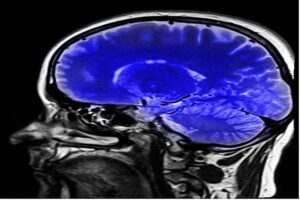
Figure 1: Shows a graphic of an animated, and relaxed ‘supertasker’. Though there is evidence that multitasking is not beneficial, Watson & Strayer have identified a select group of individuals called ‘supertaskers’ who are able to engage in complex multitasking paradigms without any discernible loss in performance
Source: Pixabay
Multitasking is a hot topic, not only in the field of psychology but also in a popular context. The term ‘multitask’ first appeared in a paper published by IBM concerning their S/360 mainframe computers, referring to their ability to perform two tasks concurrently (IBM, 1963). Since then, a plethora of multitasking misconceptions and stereotypes have held on. Cognitive scientists strive to reveal whether this machine-like trait (computer multitasking) is possible in human beings.
In human, multitasking similarly refers to performing two or more tasks simultaneously (Szameitat et al., 2015) while the more novel term ‘supertasking’ refers to executing two or more tasks concurrently without any perceivable decline in cognitive performance. Some findings from multitasking studies report that multitasking may not be so beneficial. According to Madore et al., heavy media multitasking and attention lapses are directly related, i.e., they showed that there were lapses in attention before the act of remembering and behavioral forgetting for persons who engaged in social media multitasking (Madore et al., 2020). Therefore, for most, there are switching costs – a reduction in performance accuracy or speed that results from shifting between tasks (APA, 2006).
Supertaskers, though, do not seem to suffer these negative effects of multitasking. The word ‘supertasker’, coined by psychologist Strayer from the University of Utah, refers to persons who can perform complex multitasking with little or no discernible costs in cognitive abilities. With looming reports that multitasking is not as efficient as it seems, it would be interesting to determine whether (among the broad range of those who claim to be multitaskers) there are ‘supertaskers’ who engage in multiple tasks without any discernible loss in performance. In 2010, Watson & Strayer from the University of Utah sought to investigate whether these individuals exist (Watson & Strayer, 2010).
Attention refers to the concentration of awareness on some event, with the exclusion of other stimuli (McCallum, 2015). Attention helps human beings to perform well at a given task. Many times, humans fail to pay attention to a noticeable but unforeseen object because attention was engaged on another task. This phenomenon is called ‘inattentional blindness’ (Simons & Chabris, 1999). In the context of multitasking, it is helpful to examine divided attention – the ability to distribute attention to two or more tasks (Wen et al., 2016)- and observe the detrimental effects of inattentional blindness.
Watson and Strayer recruited 200 participants and subjected them to dual-task paradigms. They tested their performance in the Operation Span (OSPAN) task. OSPAN involves memorizing items and recalling them in the correct sequence, while concurrently performing math problems. The participants did all this while also driving. Their braking distances and reaction times were measured alongside their memory and math performance. The OSPAN task is effective in detecting the individual difference in the execution of cognitive abilities (Watson & Strayer, 2010).
Watson & Strayer set stringent measures as to who can qualify to be a supertasker. Even with these measures in place, they found five individuals (2.5% of the 200 participants) who qualified as supertaskers. These supertaskers outperformed their ‘non-supertasker’ colleagues in the dual-task paradigms of braking distances & braking reaction time and math & memory performance. Moreover, (perhaps unsurprisingly) the supertaskers outperformed their counterparts in the single-task paradigms, i.e., they were able to outperform their counterparts in experiments that measured the tasks or goals independently. This observation and the results from Monte-Carlo simulations. These are simulations that model the probability of different outcomes in an experiment that cannot easily be predicted due to the involvement of random variables. Monte-Carlo simulations showed that qualifying to be a supertasker was not a statistical fluke (Watson & Strayer, 2010; Kenton, 2020).
Their findings suggest that there are indeed supertaskers in our midst, albeit a small percentage. The evidence of supertaskers challenges the long-accepted school of thought that explains how humans respond to information processing: the Response-selection bottleneck (RSB). According to the RSB theory, if a human faces the challenge of parsing two or more different stimuli, the selection of response for one task will have to wait until the response selection of the other is completed (Meyer et al., 1995).
If supertaskers do exist, why are they such a small portion of the population? Evolutionary hypotheses have been postulated as to why supertaskers are not so ubiquitous. This ‘supertasking’ trait may have few benefits in the modern world, and therefore, has yet to propagate through the population. For now, at least, there may be few benefits related to being a supertasker. Arguably, as the world gets more technologically and professionally demanding, more and more supertaskers may emerge to deal with these demands (Watson & Strayer, 2010). Soon, many might concurrently multitask without a decrease in performance or cognitive ability; perhaps study for a midterm while playing the piano.
In a world where attention as a ‘scarce’ commodity, it may be comforting to know that some people possess this commodity in abundance. Still, in the same world where approximately 2,841 Americans died in car accidents related to concurrently driving and using telephones, Watson and Strayer’s (statistically sound) results demonstrate that although there are supertaskers in our midst, we should not be too overconfident in our abilities.
References
APA. (2006, March 20). Multitasking: Switching costs. Https://Www.Apa.Org. https://www.apa.org/research/action/multitask
IBM. (1965). IBM Operating System/360 Concepts and Facilities. S360-36(C28-6535–0), 93.
Kenton, W. (2020, December 27). Monte Carlo Simulation [.Com]. Investopedia. https://www.investopedia.com/terms/m/montecarlosimulation.asp
Madore, K. P., Khazenzon, A. M., Backes, C. W., Jiang, J., Uncapher, M. R., Norcia, A. M., & Wagner, A. D. (2020). Memory failure predicted by attention lapsing and media multitasking. Nature, 587(7832), 87–91. https://doi.org/10.1038/s41586-020-2870-z
McCallum, W. C. (2015, June 9). Attention | psychology [.Com]. Encyclopedia Britannica. https://www.britannica.com/science/attention
Meyer, D. E., Kieras, D. E., Lauber, E., Schumacher, E. H., Glass, J., Zurbriggen, E., Gmeindl, L., & Apfelblat, D. (1995). Adaptive executive control: Flexible multiple-task performance without pervasive immutable response-selection bottlenecks. Acta Psychologica, 90(1), 163–190. https://doi.org/10.1016/0001-6918(95)00026-Q
NCSL. (2020, May 10). Distracted Driving | Cell Phone Use [..Org]. National Conference of State Legislatures. https://www.ncsl.org/research/transportation/cellular-phone-use-and-texting-while-driving-laws.aspx
Simons, D., & Chabris, D. (1999). Gorillas in our midst: Sustained inattentional blindness for dynamic events. Perception, 28, 1059–1074.
Szameitat, A. J., Hamaida, Y., Tulley, R. S., Saylik, R., & Otermans, P. C. J. (2015). “Women Are Better Than Men”–Public Beliefs on Gender Differences and Other Aspects in Multitasking. PLOS ONE, 10(10), e0140371. https://doi.org/10.1371/journal.pone.0140371
Watson, J. M., & Strayer, D. L. (2010). Supertaskers: Profiles in extraordinary multitasking ability. Psychonomic Bulletin & Review, 17(4), 479–485. https://doi.org/10.3758/PBR.17.4.479
Wen, W., Yamashita, A., & Asama, H. (2016). Divided Attention and Processes Underlying Sense of Agency. Frontiers in Psychology, 7. https://doi.org/10.3389/fpsyg.2016.00035
Related Posts
Advances in the Search for an Alzheimer’s cure
Cover Image: This image displays the differences between a normal...
Read MoreContradicting the Disparity Between Primate and Avian Brains
Figure 1: A Northwestern Crow near Whittier, Alaska. Corvids, along...
Read MoreAn Overview of Modern Brain-Imaging Techniques
Figure: An image of a Magnetic Resonance Imaging (MRI) scan....
Read MoreCollins Kariuki



